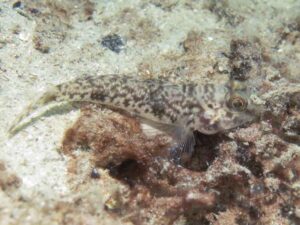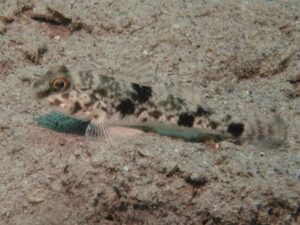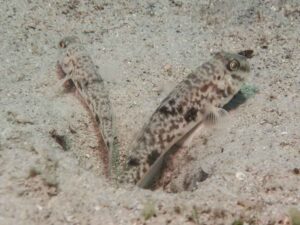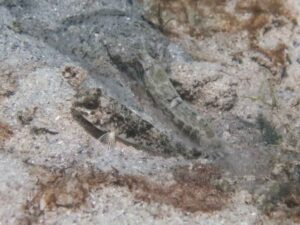Hairfin Goby
Yongeichthys nebulosus
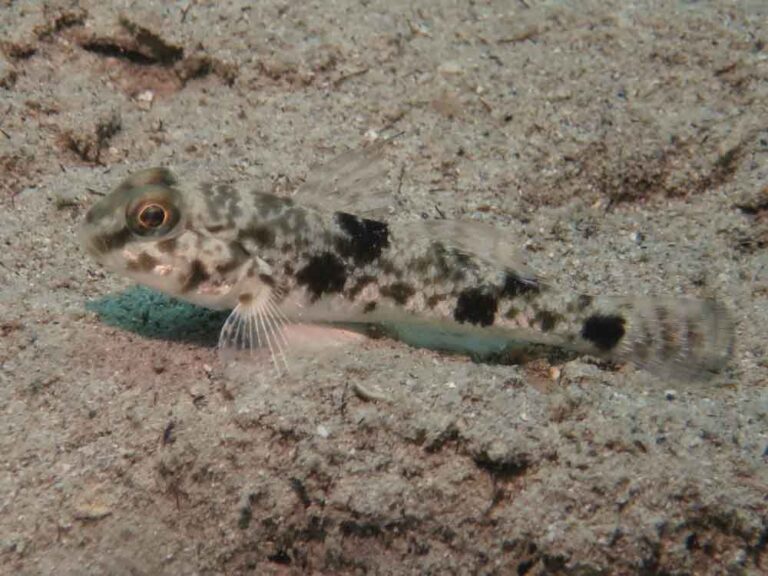
Hairpin Goby
Yongeichthys nebulosa
(Forsskal, 1775)
Description
Body design
A pale grey to greenish brown goby with three large dark brown blotches on the side, brown spots on the dorsal and caudal fins and elongate filaments on the second and third dorsal spine. Often yellowish fins. They are very variable and may represent several undescribed species. our observations are on juvenile fish as they are usually about 3 to 4 cm long. They are know to grow to 18 cm.
Other Names: Previously considered to be in the genus Acentrogobius.
Common names include Hair-finned Goby, Poisonous Goby, Shadow Goby and Three-blotch Goby.
Natural History
Habitat
Habitat
Depth range 0 to 10 metres. We have seen these fish usually alone on flat silty sand away from the reef edge in lagoons and areas of low visibility. They are known to inhabit silty and muddy inner reefs, mangrove areas and in the lower reaches of rivers and streams.
This species is not considered to be a shrimpgoby but we have watched them interacting with partner shrimps and felt it warranted including them.
They lurk around the silty sand habitat that is home to several shrimpgobies and their shrimps. When threatened they flee into a burrow. It does not appear to have a fixed burrow as it moves around too much. We have seen and photographed this goby at a burrow entrance while a shrimp working nearby maintained antenna contact. This is not consistent behaviour but it does suggest some special affinity as aquarium observations show two outcomes when a partner shrimp makes contact with a fish other than a shrimpgoby. Either the shrimp drives the fish away with its major chelipeds or the fish retreats on feeling the touch of the shrimp’s antennae (Harada 1969).
Behaviour
They are poisonous to eat as their skin and internal organs contain tetrodotoxin.
They will readily go into any hole to hide but will sometimes sit at the entrance of shrimpgoby burrows and use the facilities if danger threatens. They occasionally stand lookout for the partner shrimp and communicate with the shrimp. They do not stay long and move away to another burrow.
Distribution
Published distribution
Widespread Indo-Pacific species from the Red Sea and East Africa to the Caroline Islands and Samoa, and northern Australia to the Ryukyu Islands in Japan.
Our records
Australia: Great Barrier Reef, Lizard Island to Frazer Island.
Associated Shrimp species
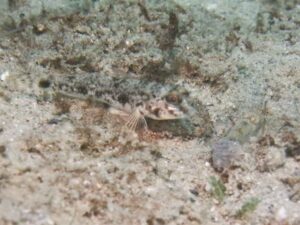
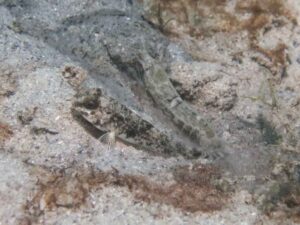
Associated Shrimp (two shrimps)
Red-Speckled Shrimp
Tasselled Shrimp
Video (need to add this)

